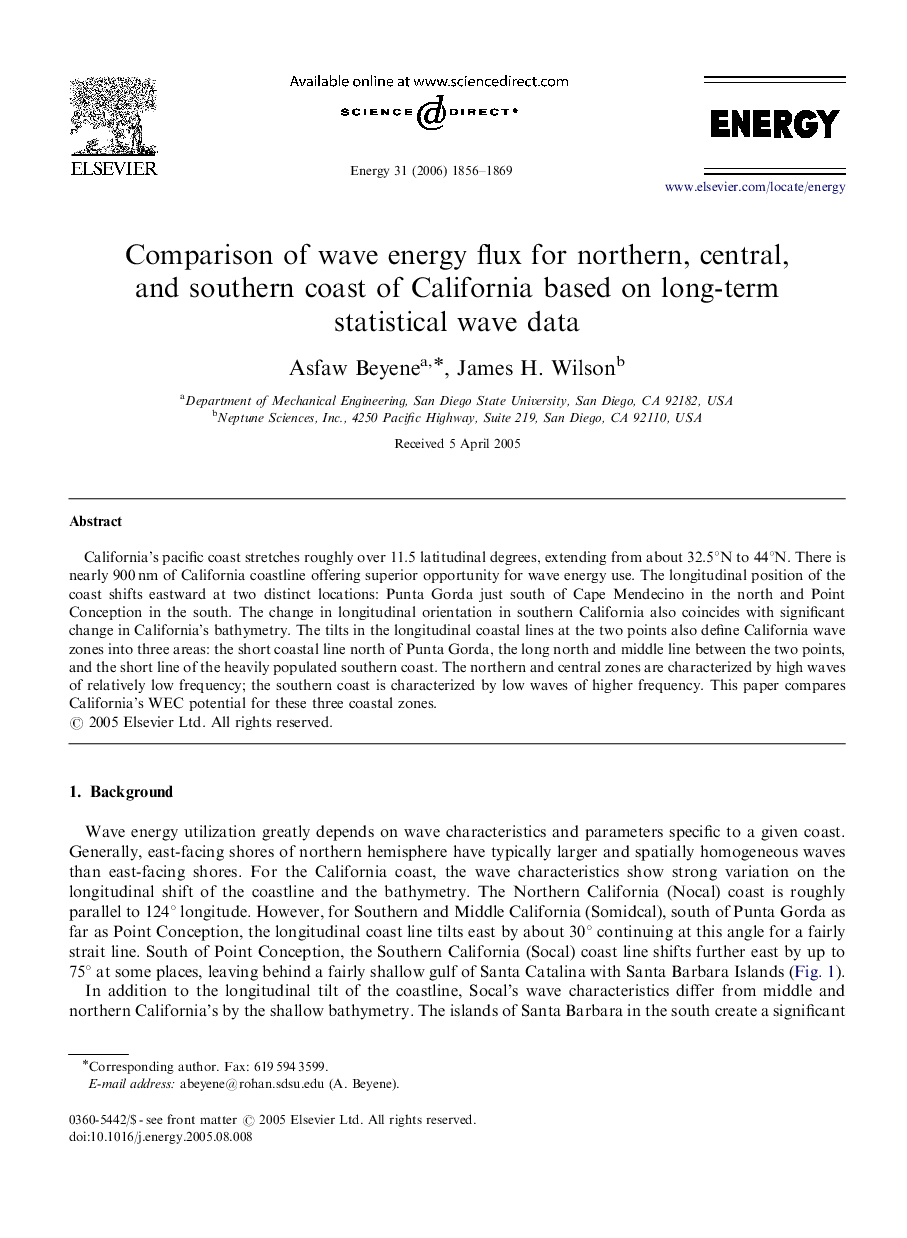| Article ID | Journal | Published Year | Pages | File Type |
|---|---|---|---|---|
| 1736161 | Energy | 2006 | 14 Pages |
California's pacific coast stretches roughly over 11.5 latitudinal degrees, extending from about 32.5°N to 44°N. There is nearly 900 nm of California coastline offering superior opportunity for wave energy use. The longitudinal position of the coast shifts eastward at two distinct locations: Punta Gorda just south of Cape Mendecino in the north and Point Conception in the south. The change in longitudinal orientation in southern California also coincides with significant change in California's bathymetry. The tilts in the longitudinal coastal lines at the two points also define California wave zones into three areas: the short coastal line north of Punta Gorda, the long north and middle line between the two points, and the short line of the heavily populated southern coast. The northern and central zones are characterized by high waves of relatively low frequency; the southern coast is characterized by low waves of higher frequency. This paper compares California's WEC potential for these three coastal zones.
